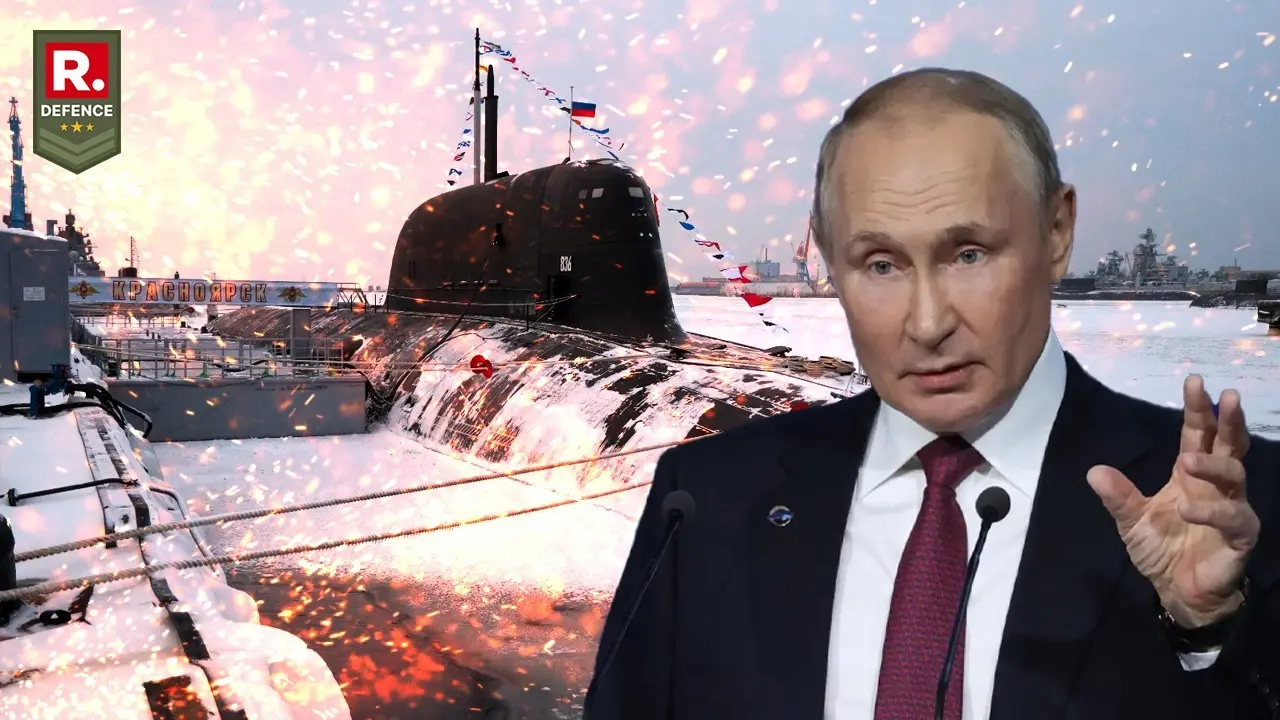Updated 1 April 2025 at 18:56 IST
Putin’s Nuclear Submarine Plans Face Major Hurdles Amid Economic Strain, Sanctions and Ukraine War
This decision follows the launch of the Perm nuclear submarine, the latest in the Yasen-M class, designed to carry the Zircon hypersonic cruise missile.
- Defence News
- 3 min read

Moscow, Russia — Russian President Vladimir Putin has announced plans to build eight new nuclear submarines for the Navy, marking a recalibration of the country's naval strategy. The decision follows the launch of the Perm nuclear submarine, the latest in the Yasen-M class, which will serve as the first full-time carrier of the Zircon hypersonic cruise missile.
The move signals a shift from initial Russian naval ambitions, which envisioned a fleet of 30 Yasen-class attack submarines and 14 Borei-class strategic missile submarines. Instead, Moscow now aims for 10 vessels in each category, reflecting both strategic recalculations and the growing constraints facing the Russian defence industry.
Production bottlenecks hamper expansion
At the centre of Russia’s submarine-building efforts is Sevmash, the nation’s sole manufacturer of nuclear submarines. The plant, which has long struggled with delays, has become a bottleneck in Russia’s naval production pipeline. While Sevmash recently modernized its facilities, production remains sluggish, raising doubts about whether Russia can meet its ambitious targets before shifting to the next-generation Husky-class submarines in 2027.
“The Yasen-M line may not continue much longer,” said Pavel Luzin, a Russian defence analyst with the Washington-based Center for European Policy Analysis. “Moscow is balancing between finishing what it started and preparing for the future.”
Advertisement

Complicating matters further is the ongoing war in Ukraine, which has significantly altered Russia’s defence spending priorities. Resources that would have gone toward naval expansion have been redirected to weapons and equipment needed on the battlefield.
Budget cuts and workforce struggles
Despite Putin’s grand naval vision, economic realities tell a different story. Sevmash workers are reportedly experiencing pay cuts due to reduced orders, according to economist Vyacheslav Shiryaev. Russia’s defence budget is under strain, and large-scale submarine production may be an increasingly difficult burden.
Advertisement
“The money is going to tanks, drones, and artillery, not long-term naval projects,” said Dmitry Smirnov, a Russian military expert. “Submarines are powerful, but they don’t win land wars.”

Another critical challenge comes from Western sanctions imposed after Russia’s invasion of Ukraine. Many key submarine components were previously sourced from foreign suppliers, but those supply chains have now collapsed. Moscow has been forced to develop some parts domestically from scratch—a time-consuming and costly process that has further slowed production.
“Russia was never fully self-sufficient in submarine components,” Smirnov noted. “Now, without Western tech, they’re scrambling to replace what they’ve lost.”
A fleet without support?
Even if Russia succeeds in building more submarines, experts question whether the supporting naval infrastructure will keep pace. Reconnaissance satellites, surface ships, and surveillance aircraft—critical elements for an effective submarine fleet—are lacking. This raises concerns that Moscow may be expanding its undersea arsenal without the necessary operational support to maximize its effectiveness.
As Russia pushes forward with its nuclear submarine program, the challenges are mounting. Between economic constraints, technological setbacks, and shifting defence priorities, Putin’s ambitions may prove to be more aspirational than achievable.
Watch- Russia-Ukraine Ceasefire Deal: Kremlin Responds To Trump Says, ‘Ending War A Lasting Process’
Published By : Yuvraj Tyagi
Published On: 1 April 2025 at 18:56 IST
